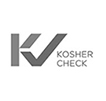
Rich. Earthy. Nutty. Bittersweet. The smell of a good cup of coffee can start to wake you up before you even take the first sip — and when you do, it’s like magic. But what defines a good cup of coffee?
Whether you’re a lifelong coffee connoisseur or just beginning to develop a refined java palate, it’s important to narrow down the qualities of an excellent brew. Once you’ve learned how to taste-test coffee, you’ll be on your way to creating a product that you can proudly promote. Here, we’ll offer insight into how to go about coffee tasting and what specific qualities to look for.
What Is Coffee Cupping?
Coffee cupping is the official term for a coffee tasting event. Cupping coffee refers to how coffee producers and buyers taste coffee to check a batch for quality control. During a coffee cupping, tasters score coffee on various aspects, such as cleanness, acidity, sweetness, mouthfeel, and aftertaste. Based on these rankings, the tasters decide whether the batch of coffee is up to their standards.
How to Do a Coffee Cupping
If you’re interested in doing a coffee tasting event, you’ll want to follow the basic outline of a coffee cupping:
- Complete a blind setup
- Smell the dry coffee aromas
- Evaluate the wet coffee aromas
- Taste the coffee flavors
- Score the coffee
The following sections will take a closer look at each of these steps.
1. Blind Setup
To ensure you give each coffee a fair, unbiased tasting, you’ll want to set up a blind coffee cupping. Start by numbering each coffee and writing the coffee and its number down on a piece of paper. Write the respective numbers on the bottom of your brewing vessel, and be sure to grind each coffee in the appropriately numbered vessel. You can change up their order after brewing to keep yourself from knowing which is which.
Once you’ve numbered everything, hide the piece of paper from view to prevent yourself from peeking at the numbers. Once the cupping is finished, you can look at the numbers on the brewing vessels to figure out the identity of each coffee you scored. Although this step is optional, it is an excellent method for keeping the cupping experience honest and eliminating any bias against origin, roaster, or other variables you may have.
2. The Dry Coffee Aromas
Once you’ve set up your blind tasting, you’ll be ready to evaluate the coffee aromas. A proper coffee tasting involves a mixture of both smell and taste. Take your time with both and allow your senses to soak up every detail. As you taste-test different coffees, take a moment to notice the smell before ever taking a sip. Be sure that your nose is clear and do your testing in a room that’s not filled with other strong scents or distractions.
Dry coffee aromas are best identified in coarsely ground coffee. You can either smell the grounds before brewing or grind a separate small batch of about 10 grams and breathe in the scent. The smell of coffee can be broken down into three major categories:
- Enzymatic: Thanks to the coffee bean’s origin as a fruit seed, many coffees emit a floral or fruit-like aroma. Determined by where the beans were harvested, this scent could take the form of a sweet berry or bittersweet citrus smell.
- Sugar: When exposed to heat, amino acids and sugar can take on a nutty or chocolatey aroma. Depending on your coffee roast, you might notice a strong brown sugar smell.
- Dry distillation: As beans cook in the roaster, they can take on aromas like wood, tobacco, or leather. Darker roasts will have stronger dry distillation scents. While this might remind you of a burned smell, this doesn’t mean dark roasts have anything wrong with them — it just means a stronger flavor.
Take your time to make a note of these factors. Analyze what kinds of sugar, enzymes, and distillation details you can notice from the aroma alone. Now, it’s time for the real fun to begin — let’s start tasting.
3. The Wet Coffee Aromas
Tasting the coffee starts with brewing it. Make sure you give each coffee ample time to brew without disturbance so the coffee grounds can form a crust on the surface of the coffee. This crust serves to lock in the coffee’s aromas, which will give you a better whiff when it comes time to evaluate the wet coffee aromas.
Once the brewing time has passed, take a spoonful of the freshly brewed coffee grounds and breathe in deeply, allowing the aromas to flood your senses. Gently stir the coffee grounds to disrupt the aromas again, then inhale to experience another concentrated smell of the aromas. Take note of whether the wet aroma is different from the dry aroma.
4. The Taste Test
With your olfactory senses activated, it’s time to slowly sip your coffee. Be sure to move the liquid all around your tongue so that every taste bud — from sweet to bitter — has a chance to savor the flavor. This is best achieved through a slurping action. Take notes and share your thoughts. Repeat this process with each type of coffee you’re sampling.
There’s no limit to the kinds of flavors you can taste. Try to really nail down the specific adjectives to describe what you’re drinking — this will help you compare your brews and eventually decide which to pick as your product. Coffee taste can be defined by notes such as:
- Bright
- Caramelly
- Earthy
- Herbal
- Nutty
- Spicy
- Woody
- Acrid
This is not a comprehensive list — there are countless coffee tasting notes you might be able to identify. Get creative!
5. The Scoring
When selecting the right product for your private coffee label, there are five key factors to consider. The unique notes of each roast are influenced by the coffee type, its harvest location, and how it’s processed. You’ll want to pay special attention to your coffee’s:
- Sweetness: Think about how sweet the coffee is naturally — some will be more bitter than others. Narrow down what kind of sweetness it is. For example, the flavor may remind you of honey, white sugar, or caramelized brown sugar.
- Body: Some coffees will sit light on your tongue, while others offer a heavier body. Compare the body of your coffee to milk, for example. Whole milk and nonfat milk will feel thicker or thinner in your mouth. The same is true for a coffee roast.
- Acidity: Subtle acidic hints, like grapefruit or lemon, can offer a tangy sensation and strength to your brew. Assess the acidity of your coffee by comparing it to citrus fruits.
- Flavor: Think about what the flavor of each coffee reminds you of. Whether it’s a leather jacket or a chocolate cake, draw connections between the coffee and other tastes in order to pinpoint its overall flavor.
- Finish: After you’ve taken the final sip, what sensation lingers in your mouth? It could be sweet, thick, dry, or long-lasting. Your coffee’s finish is important, as it will leave your customers with a lasting impression.
Weighing these important characteristics against your notes on the coffees’ aromas will help you decide which coffee performed best overall. Once you’ve settled on the final score for each coffee, you can go back and check their identity on the original piece of paper to discover which coffee turned out to be the best for your brand.
Partner with Joe’s Garage Coffee
Looking for expert partners to launch your private coffee label? Joe’s Garage Coffee has got you covered. As coffee lovers and people-loving people, we’ve provided flexible coffee roasting and packaging services for more than 20 years. We work with all kinds of companies to create custom blends, package your specialty roasted coffee and help get your private label coffee brand up and running. To learn more, reach out to our team today.
Here is the Specialty Coffee Association’s Protocols & Best Practices.







